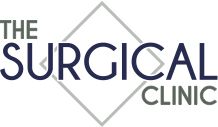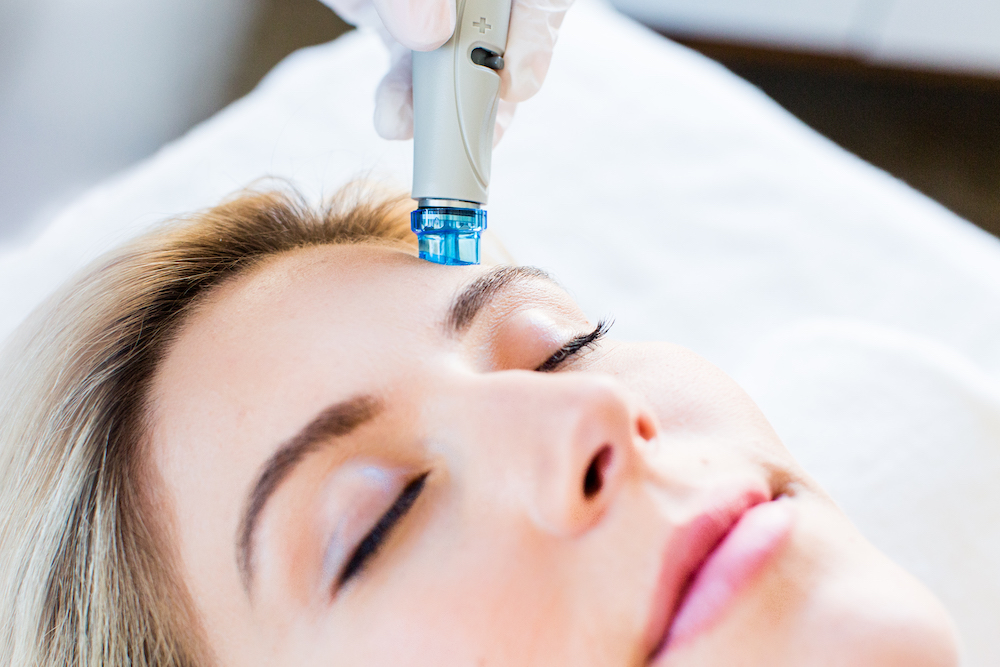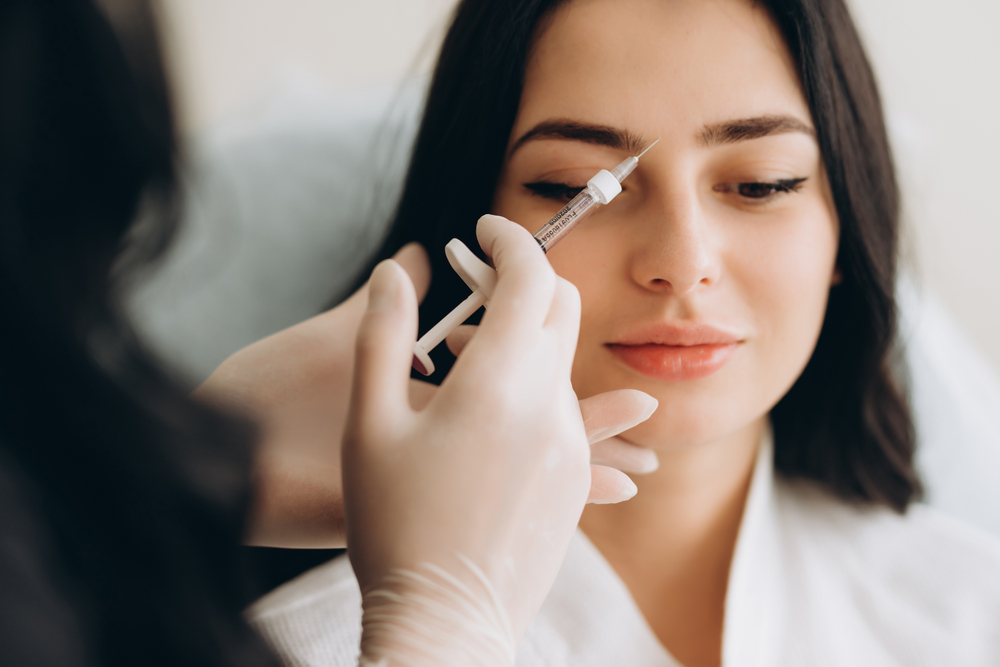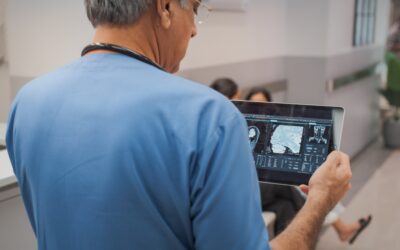Plastic Surgery
plastic surgeons in nashville, TN
Aesthetic & reconstructive
→ Dr. Dwyane Lett: The Lett Center
→ Dr. Maelee Yang: The Surgical Clinic
Our plastic surgeons, Dr. Dwayne Lett and Dr. Maelee Yang, specialize in both reconstructive surgeries as well as aesthetic/cosmetic surgeries in Nashville TN. Achieving excellence in plastic surgery procedures is a combination of education and experience.
Plastic surgery with a focus on both reconstructive & cosmetic surgery means not only handling some of the most complex procedures, but also ensures the most aesthetically pleasing result. Our surgeons are experienced with reconstructive cases and are equally dedicated to cosmetic procedures that are tailored to each patient.
Opt for both reconstructive and cosmetic surgery expertise at The Surgical Clinic in TN, eliminating the need to choose between the two specialties.

Dr. Maelee Yang
Plastic Surgeon
Nashville, TN

Dr. Dwayne Lett
Plastic Surgeon
Mt. Juliet & Lebanon, TN
Plastic Surgeons
Locations
The Surgical Clinic | Nashville
410 42nd Ave. N. | Suite 301
Nashville, TN 37209
The Lett Center | Lebanon
Lebanon, TN 37090
The Lett Center | Mt. Juliet
Mt. Juliet, TN 37122
BODY Contouring
Buttock Augmentation
Scar Revision
Wound Reconstruction
Nashville Outpatient Procedures
Nashville, Tennessee Surgery Center
Our providers at The Surgical Clinic are part of a network you can trust with a specialized focus on treatments for: General Surgery, Plastic & Reconstructive Surgery, Podiatry & Surgical Oncology downtown Nashville at the Tennessee Surgery Center.
Cosmetic Procedures
Aesthetic surgery, also called cosmetic surgery, is a medical specialty that focuses on enhancing a person’s appearance through surgical procedures. Cosmetic surgery is elective and aims to improve the aesthetic qualities of a person’s face or body. Cosmetic surgery in Nashville, TN is a popular option for those seeking to enhance their appearance and boost their confidence. At The Surgical Clinic, our board-certified plastic surgeons specialize in a range of cosmetic procedures, from breast augmentation and rhinoplasty to facelifts and liposuction.
→ Breast Augmentation: Enhance breast size and shape to achieve the silhouette you desire.
→ Facelift: Turn back the clock and rejuvenate your facial appearance.
→ Liposuction: Sculpt and contour your body for a more refined look.
→ Rhinoplasty: Refine the shape and proportion of your nose.
→ Tummy Tuck: Achieve a firmer, flatter abdomen and regain your confidence.
→ Botox and Dermal Fillers: Non-surgical options for facial rejuvenation and wrinkle reduction.
Reconstructive Procedures
Reconstructive surgery is a medical specialty focused on repairing or restoring the function, form, and appearance of body structures that have been damaged or affected by congenital conditions, trauma, disease, or surgery. The primary goal of reconstructive surgery is to improve a patient’s quality of life by addressing functional impairments or disfigurements. Typically, reconstructive surgery is a medical necessity.
→ Breast Reconstruction: Restore breast shape and appearance after mastectomy.
→ Scar Revision: Minimize the appearance of scars resulting from injury or surgery.
→ Microsurgery: Advanced techniques to reconstruct complex defects.
Breast Reconstruction Options & Benefits
If you’ve undergone a mastectomy and are considering breast reconstruction, you’re on the path to restoring not just your physical self but your confidence and well-being as well. In this important decision-making process, you’ll find guidance, support, and options tailored to your unique needs and preferences. Let us walk with you as we explore the possibilities of breast reconstruction, empowering you to make informed choices for your future.
Options and benefits:
- Implants for fuller breasts
- Flap surgery using body tissue
- Tissue expanders before implants
- Nipple and areola reconstruction
- customizable size and shape
- Choice between autologous & prosthetic
- Personalized surgical options
TYPES OF
Cosmetic Surgery
IN NASHVILLE, TN
BREAST AUGMENTATION
BREAST AUGMENTATION (MAMMOPLASTY)
Breast augmentation, also known as mammoplasty, is a surgical enhancement procedure to change the size and shape of a woman’s breasts. Reasons for considering breast augmentation include:
→ increase breast size if breasts are too small
→ increase breast volume after pregnancy and nursing
→ equalize difference in breast size
→ breast reconstruction following a mastectomy or injury
During this surgery, a small incision is made to insert a breast implant into the breast. Normally performed while the patient is under general anesthesia, there are several locations for the incision – lower portion of the breast, in the armpit, around the areola or in the belly button. During surgery, the breast tissue is raised in order to create a pocket under the tissue or chest wall muscle. The implant (usually containing a saline solution or silicone gel) is inserted.
Following surgery, patient orders include rest, limited movement, bandages to minimize the movement of the breasts and pain medication if needed. After the bandages are removed, a surgical bra must be worn for several weeks.
BREAST LIFT (MASTOPEXY)
BREAST LIFT (MASTOPEXY)
A breast lift, also known as a mastopexy, is a surgical procedure to raise and reshape sagging breasts. Reasons for considering breast lift surgery include:
- raise the breasts due to sagging caused by aging and gravity
- firm the breasts if they have lost substance due to pregnancy and nursing
- realignment of the nipples if they point down or to the side
- return of suppleness after weight loss
This surgery most commonly involved an anchor-like incision along the underside of the breast. When excess skin has been removed, the nipple and areola are moved to a higher position. The skin surrounding the areola is brought down and together to reshape the breast. Recent innovations in breast lift techniques include minimally invasive incision techniques. Surgery usually takes 90 minutes to three hours. Following surgery, patient orders include rest, limited movement, bandages to minimize movement of the breasts an pain medication if needed. After the bandages are removed, the patient must wear a specialized surgical bra for several weeks to aid in healing.
BREAST REDUCTION
BREAST REDUCTION
Breast reduction, also known as reduction mammoplasty, is a surgical procedure that reshapes the breasts in order to make them smaller, lighter and firmer. Reasons for considering breast reduction include:
- back, neck or shoulder pain caused by heavy breasts
- sagging breasts due to size
- oversized breasts for body size
- restriction of physical activity due to heavy and oversized breasts
While surgical techniques vary, the most common procedure is an incision that circles the areola with the incision going down and following the natural curve of the breast. Excess tissue, fat and skin are removed and the nipple and areola repositioned higher and stitched in place.
Following surgery, patient orders include rest, limited movement, bandages to minimize movement of the breasts and pain medication if needed. Once the bandages are removed, a specialized surgical bra must be work for several weeks to assist in healing.
BODY LIFT
BODY LIFT
Clinically known as a belt lipectomy, a Body Lift is a surgical procedure that sizes and reshapes sagging body contours. With aging, skin loses some elasticity, causing the mid-section to lose its shape and firmness. This procedure removes loose skin and fat deposits. Body lifts can be applied to the lower torso (abdomen, waist, inner/outer thighs, buttocks, hips and upper legs). Liposuction may be used in conjunction with the Body Lift.
Reasons for a Body Lift: Reshape mid-body contour.
- Correct sagging skin and fat due to aging or excessive weight loss.
- Remedy weight gain and stretched skin caused by multiple pregnancies.
What to Expect
The exact procedure will vary with each patient. Generally, a Body Lift requires an incision following the upper and/or inner thigh to the waistline. In more extensive surgeries the incision will go completely around the waist and lower back. Excess skin is removed along with underlying fat deposits. The remaining skin is pulled taught and sutured into place. The surgery can last between 3-7 hours and will, obviously, require general anesthesia.
Recovering from Body Lift
Patients will require plenty of rest and light movement to speed healing. Bandages will be applied to minimize swelling and to provide support. Frequently drainage tubes are left in place. Scars resulting from the incisions are permanent, but carefully placed to minimize visibility. Patients do report minor pain associated with the surgery which is managed by oral pain medications. Recovery times will vary based on the extent of the procedure. Complications from the surgery are rare, however, careful compliance with the post-operative directions will help minimize potential problems.
CHIN AND CHEEK IMPLANTS
CHIN AND CHEEK IMPLANTS
A strong jaw line with high cheek bones together with the eyes form the most photogenic aspects of a person’s face. Your profile can be enhanced when your facial proportion and balance is improved. Chin and Cheek Implants are permanent solutions to a rejuvenated, youthful facial profile.
EAR SURGERY (OTOPLASTY)
EAR SURGERY (OTOPLASTY)
Otoplasty, surgery of the ear, is a surgical procedure done to reduce the protrusion of the ears away from the head or “ears that stick out.” Reasons for considering otoplasty include:
- ears that protrude out from the head too much
- correction of lop ear (folded ear tips)
- reshaping of earlobes
- correction of congenital defects
- correction of an accidental injury.
Otoplasty surgery is performed under general anesthesia for children and local anesthesia for adults. It begins with an incision hidden in the crease behind the ear. For standard otoplasty, the incision allows the cartilage behind the ear to be reshaped and positioned closer to the head. This procedure takes one to two hours.
Following surgery, large bandages are wrapped around the head to secure the ear and help with healing. Patient orders include rest, limited movement and pain medication if needed. Bandages are normally removed within a week and replaced with smaller dressings until the site is fully healed.
EYELID SURGERY
EYELID SURGERY (BLEPHAROPLASTY)
Blepharoplasty, commonly known as eyelid surgery, is a corrective procedure to reduce dark circles or bags under the eyes, remove wrinkles, lines and puffiness. Reasons for considering blepharoplasty include:
- dark circles or bags under the eyes
- skin or excess skin surrounding the eyelids
- puffiness or tired appearance.
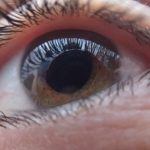 This surgery involves tiny incisions made in the natural contours around the eyes. Work is first done on the upper eyelids to tighten loose skin and remove excess skin. Then the lower eyelids are done to get rid of dark circles and puffiness. The surgery normally takes one to three hours and may be done in the surgeon’s office.
This surgery involves tiny incisions made in the natural contours around the eyes. Work is first done on the upper eyelids to tighten loose skin and remove excess skin. Then the lower eyelids are done to get rid of dark circles and puffiness. The surgery normally takes one to three hours and may be done in the surgeon’s office.
Following surgery, patient orders include rest, limited movement and pain medications if needed. The healing process for this surgery is a bit longer than most other types of cosmetic surgery.
FACELIFT
FACELIFT (RHYTIDECTOMY)
A facelift, also known as a Rhytidectomy, is a surgical procedure to smooth and firm the skin which provides the patient with a youthful appearance. Reasons for considering a facelift include:
- sagging skin, muscles and fat in the face and neck

- excess skin and fat on the neck
- sagging jaw line
- crease lines along the nose, mouth and chin.
During this surgery, small incisions are made inside the hairline following the contour in front of the ear and continuing under the earlobe to the back of the ear and lower scalp. Tissue and fat deposits are separated, skin stretched and tightened and excess skin removed. For the neck, an incision is made under the chin and the same procedure followed. Very small stitches are used to close these incisions and metal clips or staples used at the hairline. A face life may take several hours depending on what procedures are scheduled for the patient.
Following surgery, patient orders include rest, limited movement, bandages to decrease recovery time and swelling and pain medication if needed. Stitches, clips or staples are normally removed within a week.
FAT TRANSFER
FAT TRANSFER
Sometimes a patient’s own unwanted areas of body fat can be used to enhance other areas of the body. Aging and gravity along with weight and hormone fluctuations change the body contour. Unwanted fat in the abdomen, back, buttocks and thigh can be removed with Liposuction and injected into areas that need filing out. Typically, these areas are in the face, breasts and buttocks. Injecting fat to the cheeks, forehead, nose, chin, under-eye area, jawline, temples and lips can reduce frown lines or depressions. Sometimes Fat Transfer is done in conjunction with a face lift.
Women with smaller breasts can achieve fuller breasts, natural-looking results with a Fat Transfer Breast Augmentation.
Fat Transfer to augment the buttock (sometimes called the Brazillian Butt Lift)
is a procedure that may last between 1-4 hours. Fat will be removed from other areas of the body and transferred to the buttock with use of a local anesthetic. If Liposuction is performed over many areas of the body, general anesthesia may be used.
In all cases of Liposuction a medicated fluid is injected into the area where the fat is to be removed. This fluid carries a numbing agent and also expands the tissues making removing fat cells easier. Once the area is numbed, the removal process will begin.
Body fat is stored on top of your muscles, just under the skin. A suction device removes the fat. Your surgeon will make a series of incisisions in your skin to enable a small tube-like suction device to each the fat tissue. The tube will leave shallow tunnels under your skin that will collapse over the weeks following the surgery.
The harvested fat cells will be examined, isolated and cleaned. The cells are then combined with stem cells before being injected into their new ‘home’ in your body. The same tube-like device will implant them into the new area.
Sometimes the incision areas will require a stitch to close them and sometimes they are left to heal on their own. A surgical drain may be inserted in order to prevent fluid buildup. Absorbent pads are applied to protect the incision sites.
Recovering from Fat Transfer Surgery
Generally, you will be allowed to go home within 2-4 hours of your surgery. You will probably wear a compression garment for a few weeks to support the contour and minimize swelling. Pain medication may be needed for the first few days.
Expect to rest for several days before you return to daily activity. Some bruising is normal and typically fades within a couple of weeks. Swelling can occur for several months following the procedure.
Surgical bandages and drains will be removed within the first week. Any non-dissolvable stitches will be removed in 7-10 days. You will need to follow instructions about sleeping and sitting positions in order to avoid complications.
Understanding Risks and Results of Fat Transfer Surgery
You will notice immediate results from your procedure, but it may take up to one year before final results are produced. Occasionally, more than one procedure will be required to achieve your desired result.
There are some risks for the development of cysts, infection, small mineral deposits and death of the fat cells. You and your surgeon should discuss these prior to the procedure.
Your results will change as you gain or lose weight and Fat Transfer does not prevent the growth of additional fat in the area from which it was harvested. Further, over time, transferred fatty tissue may disperse. Proper expectations and maintenance should maintain your results or several years.
LASER SKIN RESURFACING
LASER SKIN RESURFACING
Laser skin resurfacing is a procedure using lasers to create new skin. The laser destroys the outer layers of the patient’s skin. This triggers the body to create a new layer of skin cells. Reasons for considering laser skin resurfacing include:
- to improve sun-damaged skin
- to reduce lines and wrinkles on the face
- to correct pigmentation problems
- to treat scars from acne, birthmarks, moles and tattoos
- to tighten skin that has lost its elasticity
During this procedure performed with a local anesthetic, the face is cleansed of oils followed by an antibiotic ointment. Then the laser destroys the outer layers of the skin.
Following the procedure, patient orders include rest, limited movement, antibiotic cream, pain medications if needed and bandages to help the healing process, control swelling and prevent infection.
LIPOSELECTION
LIPOSELECTION (BODY CONTOURING)
 LipoSelection® is a technique of body contouring, eliminating fat and reshaping areas where the patient would like to lose weight, such as waist, thighs, buttocks, arms, neck or chest. The LipSelection® VASER Lipo technique targets specific areas of the body, using ultrasonic waves to break up and separate fat cells for removal while leaving vital tissues unharmed.
LipoSelection® is a technique of body contouring, eliminating fat and reshaping areas where the patient would like to lose weight, such as waist, thighs, buttocks, arms, neck or chest. The LipSelection® VASER Lipo technique targets specific areas of the body, using ultrasonic waves to break up and separate fat cells for removal while leaving vital tissues unharmed.
Unlike traditional liposuction, VASER Lipo results in less trauma, faster recovery, minimally invasive procedures delivered in a clinical setting and smooth, tight results.
LIPOSUCTION
LIPOSUCTION
Liposuction (Lipoplasty) is a body sculpting surgery that removes fat that has stubbornly stayed despite diet and exercise. Liposuction does not replace diet and exercise, but can eliminate stubborn areas of accumulated fat.The procedure can be applied to many areas of the body and it is common for the procedure to be applied on multiple areas during one surgery. The procedure is successful in reducing love handles, saddlebags, double chin, a bulge around the waistline or other areas of fatty deposits.
Reasons for Liposuction Create
- a more proportioned figure.
- eliminate fat from Chin and Neckline Back Upper Arms Stomach and Waistline Hips and Buttocks Thighs and Knees Calves and Ankles.
The ideal surgical candidate is someone who is in good physical condition with areas not responding to a regular diet and exercise plan. During your initial consultation different options for procedures will be discussed. Tumescent (ultrasound) Liposuction could be an option. The length of a Liposuction procedure will vary from 30 minutes to several hours depending on the amount of fat being removed.
Recovering from Liposuction The time required for recovery from Liposuction will depend on the type of procedure and how extensive it was. Generally patients will require plenty of rest, and limited movement. Support garments may be worn for several weeks following Liposuction. Minor pain is sometimes reported following Liposuction and is managed with oral medication. Complications are rare, and can be minimized by carefully following post-operative directions.[/box]
LIQUID FACE LIFT
LIQUID FACE LIFT
One option for reversing the appearance of aging is the use of Dermal Filler. Dermal Fillers can reduce or eliminate wrinkles, raise scar depressions, enhance lips and replace soft-tissue volume loss. The effect can be to return the dermis to a more youthful state, giving a more natural appearance than surgical face lifts.
While there are several types of dermal fillers, some of the most popular are collagen based. Evolence hyaluronic acid based fillers (Restylane and Juvederm), poly lactic acid based fillers (Sculptra) and calcium hydroxyapatite fillers (Radiesse) can be used or even combined in various places in the face to improve the entire facial aesthetic in a procedure known as Liquid Face Lift.
Typically, a Liquid Face Lift is done in combination with BOTOX® along with Dermal Fillers such as, Juvéderm Ultra Plus, Juvéderm Ultra Plus XC, Juvéderm Voluma and Kybella. Preparing for a Dermal Filler Procedure Any drugs that may prolong bleeding (aspirin, non-steroidal anti-inflammatories or NSAIDs) should be avoided for at least 7-10 days prior to your appointment. These drugs can increase a risk of bruising and bleeding at the injection site.
Homeopathic preparations from the herb Arnica Montana, SinEcch™ is a regimen that significantly reduces bruising and swelling after surgery as well as after Dermal Filler injections. This is a product that is purchased over the counter at a vitamin store or directly from SinEcch™.
Botox® Cosmetic is a procedure using Botulinum Toxin to treat the visible signs of aging by removing or reducing wrinkles. Clostridium botulinum bacterium is purified to become the protein known as Botox®. When injected into muscles, Botox® reduces activity which can reduce frown lines between the brows. Botox® Cosmetic is a treatment that can temporarily smooth moderate to severe frown lines, lasting up to 4 months.
Reasons for considering Botox® include: excessive facial wrinkles furrows in your forehead crows feet around your eyes frown line between your eyebrows This procedure involves the injection of a small amount, 1-2 cc of Botox® into the area of the wrinkle. Botox® blocks the impulses from the nerve to the facial muscles, relaxing them and smoothing out the skin. The results of this procedure will last three to six months. Following the procedure, patient orders include refraining from heavy physical exercise, rubbing the injected area for 24 hours, applying make-up or laying flat for a minimum of 4 hours after the injections. For information about Botox®: botoxcosmetic.com.
Juvéderm® Voluma, Ultra Plus & Ultra Plus XC® Hyaluronic acid is a naturally occurring substance in your skin that helps to add volume and hydration. The Juvéderm® gels instantly restore the volume of skin and smooth away facial wrinkles and folds, like your “smile lines” or “parentheses” (nasolabial folds which are the creases that run from the bottom of your nose to the corners of your mouth). For information about Juvéderm®: juvederm.com.
Kybella is a non-surgical injectable that reduces moderate to severe fat on the upper neck (double chin). The injection contains a naturally occurring molecule which eats away at fat. Properly injected, other cells will remain healthy and intact.
Volbella Juvéderm® VOLBELLA® with Lidocaine is the latest advancement in the Juvéderm® range of facial fillers, developed for use around the lips and mouth. This smooth gel is injected with an ultra-fine needle. The gel provides a soft natural feel while filling in lip lines and wrinkles while the hyaluronic acid attracts and retains moisture. The treatment results can last up to a year.
Your First Visit: During your consultation, we will ask about your medical history, allergies, medications you take and we will perform an examination of the soft tissue of your face to assess wrinkle depths, folds and areas you may want corrections to be made. Most patients will need only one treatment for optimal rejuvenation, however, results may vary and additional treatments may be required to achieve and main optimal results.
NOSE SURGERY (RHINOPLASTY)
NOSE SURGERY (RHINOPLASTY)
Rhinoplasty, also known as nose surgery, is a surgical procedure to reshape the nose. Reasons for considering rhinoplasty include:
- cosmetic reasons; to create a more pleasing look
- reduce or correct the size of the nose
- reform a crooked nose
- restore the nose if damaged in an accident
- help with breathing problems by rebuilding the nasal passages
- treat nasal deformities caused at birth.
 During this surgery, small incisions are made to allow the surgeon access to the nasal structure. The cartilage and bone are reshaped to form the new look. There are two methods for this surgery – open and closed. The open method allows most visibility and control of the procedure with the incision placed between the nostrils on the medial nostril strip. The closed method, all incisions are internal, healing faster, but with less surgical control. Rhinoplasty surgery takes from one to three hours, depending upon the reason for surgery. Following surgery, patient orders include rest, limited movement, splint/bandages to prevent movement of the nose, no smoking for several weeks after surgery and protection of the nose from the pressure of eye glasses as well as protection from too much sun.
During this surgery, small incisions are made to allow the surgeon access to the nasal structure. The cartilage and bone are reshaped to form the new look. There are two methods for this surgery – open and closed. The open method allows most visibility and control of the procedure with the incision placed between the nostrils on the medial nostril strip. The closed method, all incisions are internal, healing faster, but with less surgical control. Rhinoplasty surgery takes from one to three hours, depending upon the reason for surgery. Following surgery, patient orders include rest, limited movement, splint/bandages to prevent movement of the nose, no smoking for several weeks after surgery and protection of the nose from the pressure of eye glasses as well as protection from too much sun.
TUMMY TUCK (ABDOMINOPLASTY)
TUMMY TUCK (ABDOMINOPLASTY)
A tummy tuck, also known as abdominoplasty, is the surgical removal of excess skin or fatty deposits from the abdomen, along with the repositioning to tighten abdomen muscles.
The abdominoplasty procedure lasts from one to five hours, depending upon the patient’s unique physiology. An incision is made just above the pubic bone area, going horizontally across the lower abdomen. Skin is stretched away from the muscle tissue and excess skin is removed. Muscle tissue is tightened, the incision closed and the skin stitched back into place. Following this surgery, patient orders include rest, limited movement and pain medication, if needed, to alleviate and pain and discomfort. Once stitches are removed, normal activities can be removed, generally within two weeks. In some cases, it may take up to a year for the patient’s body to adapt to these abdominal changes.
REASONS FOR CONSIDERING A TUMMY TUCK
→ dieting and exercise are not enough to improve the abdomen area
→ excessive skin accumulation after weight loss
→ loss of skin elasticity or loose abdomen muscles due to pregnancy
→ removal of skin and fat deposits and tightening of abdomen muscles to have a flatter and tighter stomach
most common plastic surgery
The first most popular plastic surgery can vary depending on the year. However, people consistently seek a skilled cosmetic surgeon for breast augmentation, nose job, tummy tuck, facelift and eyelid surgery.
Body Contouring
Surgical & non-surgical
Body procedures can help with reshaping and lifting specific areas with surgical and nonsurgical options. Our plastic surgeons are able to help patients decide which procedure is best for them. Some many benefit from a cosmetic surgery like a tummy tuck, while others may just want smaller amounts of loose skin tightened or fat removed, which can be done with treatments like BodyTite or Morpheus8 Body.
→ Fat Removal
liposuction, liposelection
→ Skin Tightening
tummy tuck, Morpheus8 body
→ BODY Enhancement
thigh/arm lift, buttock augmentation
→ Fat transfer
Breast Procedures
Cosmetic & Reconstructive
→ Breast Augmentation
boob job, breast implants
→ Breast Lift
with and/or without breast implants
→ Breast Reconstruction
breast cancer surgery
→ Breast Reduction
Breast surgery has come a long way over the years. Our reconstructive and cosmetic plastic surgeons provide advanced reconstructive procedures and cosmetic surgeries in Nashville, TN, for women looking to lift, reduce, restore, or enhance their natural breasts. For anyone who has been diagnosed with breast cancer, we have a team of surgeons who work together during the entire journey from diagnosis to recovery and reconstruction. Learn more →
Blepharoplasty
Eyelid Surgery
Blepharoplasty, commonly known as eyelid surgery, is a corrective procedure to reduce dark circles or bags under the eyes, remove wrinkles, lines, and puffiness.
Reasons for considering blepharoplasty include:
→ dark circles or bags under the eyes
→ skin or excess skin surrounding the eyelids
→ puffiness or tired appearance
This cosmetic surgery involves tiny incisions made in the natural contours around the eyes. Work is first done on the upper eyelids to tighten loose skin and remove excess skin. Then the lower eyelids are done to get rid of dark circles and puffiness. The surgery normally takes one to three hours and may be done in the surgeon’s office.
Following surgery, patient orders include rest, limited movement and pain medications if needed. The healing process for this surgery is a bit longer than most other types of cosmetic surgery.
Chin & Cheek
Implants & Filler
A strong jawline with high cheekbones together with the eyes form the most photogenic aspects of a person’s face. Your profile can be enhanced when your facial proportion and balance are improved. Chin and cheek facial implants are permanent solutions to rejuvenated and youthful facial features.
Nonsurgical chin & cheek options:
→ Evoke
→ dermal fillers
→ PDO threads
Rhytidectomy
Facelift
A facelift, also known as a rhytidectomy, is a surgical procedure to smooth and firm the skin which provides the patient with a youthful appearance.
Reasons for considering a facelift:
→ sagging skin, muscles and fat in the face and neck
→ excess skin and fat on the neck
→ sagging jawline
→ crease lines along the nose, mouth and chin
During this cosmetic surgery, small incisions are made inside the hairline following the contour in front of the ear and continuing under the earlobe to the back of the ear and lower scalp. Tissue and fat deposits are separated, skin stretched and tightened and excess skin removed.
For neck procedures, an incision is made under the chin where the same process tightens the skin. Very small stitches are used to close these incisions and metal clips or staples used at the hairline. A face life may take several hours depending on what procedures are scheduled for the patient.
Following surgery, patient orders include rest, limited movement, bandages to decrease recovery time and swelling and pain medication if needed. Stitches, clips or staples are normally removed within a week at our Nashville clinic.
Otoplasty
Ear Surgery
Otoplasty, surgery of the ear, is a cosmetic surgical procedure done to reduce the protrusion of the ears away from the head or “ears that stick out.”
Reasons for considering otoplasty:
→ ears that protrude out from the head too much
→ correction of lop ear (folded ear tips)
→ reshaping of earlobes
→ correction of congenital defects
→ correction of an accidental injury.
Otoplasty surgery is performed under general anesthesia for children and local anesthesia for adults. It begins with an incision hidden in the crease behind the ear. For standard otoplasty, the incision allows the cartilage behind the ear to be reshaped and positioned closer to the head. This procedure takes one to two hours.
Following surgery, large bandages are wrapped around the head to secure the ear and help with healing. Patient orders include rest, limited movement and pain medication if needed. Bandages are normally removed within a week and replaced with smaller dressings until the site is fully healed.
Rhinoplasty
Nose Job Surgery
Rhinoplasty, also known as nose surgery or a nose job, is a cosmetic surgical procedure to reshape the nose.
Reasons for considering rhinoplasty:
→ cosmetic reasons; to create a more pleasing look
→ reduce or correct the size of the nose
→ reform a crooked nose
→ restore the nose if damaged in an accident
→ help with breathing problems by rebuilding the nasal passages
→ treat nasal deformities caused at birth.
What to expect:
Small incisions are made to allow the surgeon access to the nasal structure. The cartilage and bone are reshaped to form the new look. There are two methods for this surgery – open and closed.
The open method allows most visibility and control of the procedure with the incision placed between the nostrils on the medial nostril strip. The closed method, all incisions are internal, healing faster, but with less surgical control.
Recovery:
Rhinoplasty surgery takes from one to three hours, depending upon the reason for surgery. Following surgery, patient orders include rest, limited movement, splint/bandages to prevent movement of the nose, no smoking for several weeks after surgery and protection of the nose from the pressure of eyeglasses as well as protection from too much sun.
Plastic Surgery at The Surgical Clinics in Nashville
When it comes to having plastic surgery at The Surgical Clinic, every one of the team members understands that you are not fully recovered until you have regained the appearance that makes you feel recovered. You will find your plastic surgeon and the entire cosmetic team ready to listen to your concerns and help you find the best solution to the type of result that you want.
The Surgical Clinic strives to provide each patient with a supportive environment in which they are encouraged to speak honestly about their hopes and expectations and to develop a care plan with their plastic surgeon will provide a safe pathway to optimal cosmetic results. Strict guidelines and standards followed by your surgeon and clinical team will help ensure that you have the cosmetic enhancement results that you desire from the best surgical team for face and body plastic surgery in Tennessee.
The plastic surgeons in Tennessee (Nashville, Mt. Juliet and Lebanon, TN) are dedicated to working with each patient in a caring and individualized practice setting that recognizes the deeply personal decision-making that each patient will make. The entire office is dedicated to supporting patients who are pursuing a reconstructive procedure as a part of recovery from an illness such as cancer for optimal healing and oftentimes cosmetic enhancements. Beyond traditional plastic surgery, the plastic surgeons at The Surgical Clinic offer a range of aesthetic services that include nonsurgical options for the face and body that leave patients feeling rejuvenated with a more youthful appearance.
blog articles
plastic surgery
Plastic Surgery Trends: Summer 2025
Curious about what the plastic surgery trends of summer 2025 will be? Allow the surgical experts...
Nerve Preservation Techniques in Reconstructive Plastic Surgery to Enhance Sensory Recovery and Reduce Chronic Pain
Reconstructive surgery plays a crucial role in restoring function and appearance to your body...
Benefits of Imaging Before Plastic Surgery
Imaging prior to plastic surgery, regardless of the type, is...
